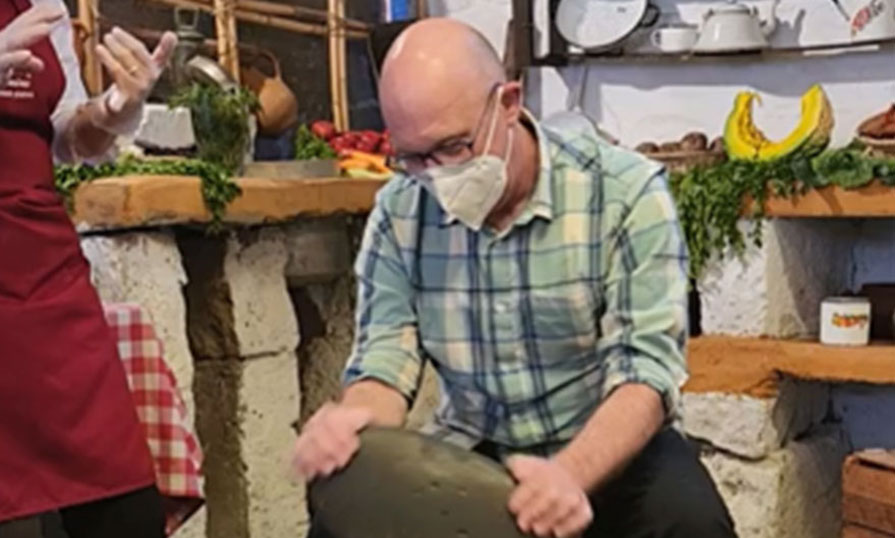Culinary Project in Peru - Sean Kettley's Story

What do you say when asked “do you want to try?” For, me, the answer is always an emphatic “YES!!” I never have to think about it – Try this food? Yes! Try this skill? Yes! I don’t travel to be an observer from afar. I want to be a participant!
Here I am at La Neuva Palomino – a Picanteria (a traditional lunchtime restaurant) in Arequipa, Peru, trying my hand at using natural river stones for grinding huacatay into a mildly spicy salsa (sauce) of dried yellow aji chillies, fried garlic, fried onions, salt, ground dried shrimp, and water. Huacatay is a herb from the marigold family, and its smell and fragrance (to my palate at least) is a unique combination of mint, lemon, and chervil. I love the directions the owner gives for making this super-flavourful salsa “you can kind of do whatever you want really, but always grind the huacatay first”.
Peru is a chef’s dream in every sense. Every chef wants to travel to countries that are rich with a diversity of dishes and ingredients we don’t normally see at home. Peru has that – in spades, thanks to its three regions that are very distinct geographically, agriculturally and meteorogically – the arid coast, the high Andes, and the rain forest of the eastern interior.
But many countries have diverse agriculture regions as well. Like the other “A-list” cuisines of the world, what sets Peru’s apart is its seamless blend of its natural ingredients, its history, and its many cultures. You cannot miss the Spanish influence in some of the dishes, but equally obvious is the showcasing of ingredients that the indigenous peoples have used for a thousand years – many of which can be found nowhere else on Earth. However, this is definitely not simply Spanish food cooked with local ingredients though! Even the casual diner would never confuse Peruvian cuisine with Spanish or Mexican dishes. Here, the foods, religions, and cultures of the New World and the Old World came together – colliding, melding, and transforming. From that forge came an entirely new and unique cuisine – one that is distinctly Peruvian. The national pride in that cuisine has spawned a generation of Peruvian chefs, such as Gastón Acurio, who are proudly and tirelessly championing their brand of gastronomy around the globe – and earning accolades in the process.
I encourage you to try an authentic Peruvian restaurant – spread the word! 25 years ago Sushi restaurants were a unique food experience in Canada – an experience you enjoyed as a “treat” on a rare occasion out. Today, many Canadian children eat sushi and they sell it in our local grocery stores. In the years to come we may similarly see ingredients for Ceviche, stuffed Rocoto Relleno, and Lomo Saltado on our shopping lists at home!
Sean Kettley
Culinary Management Faculty
NSCC Akerley Campus
